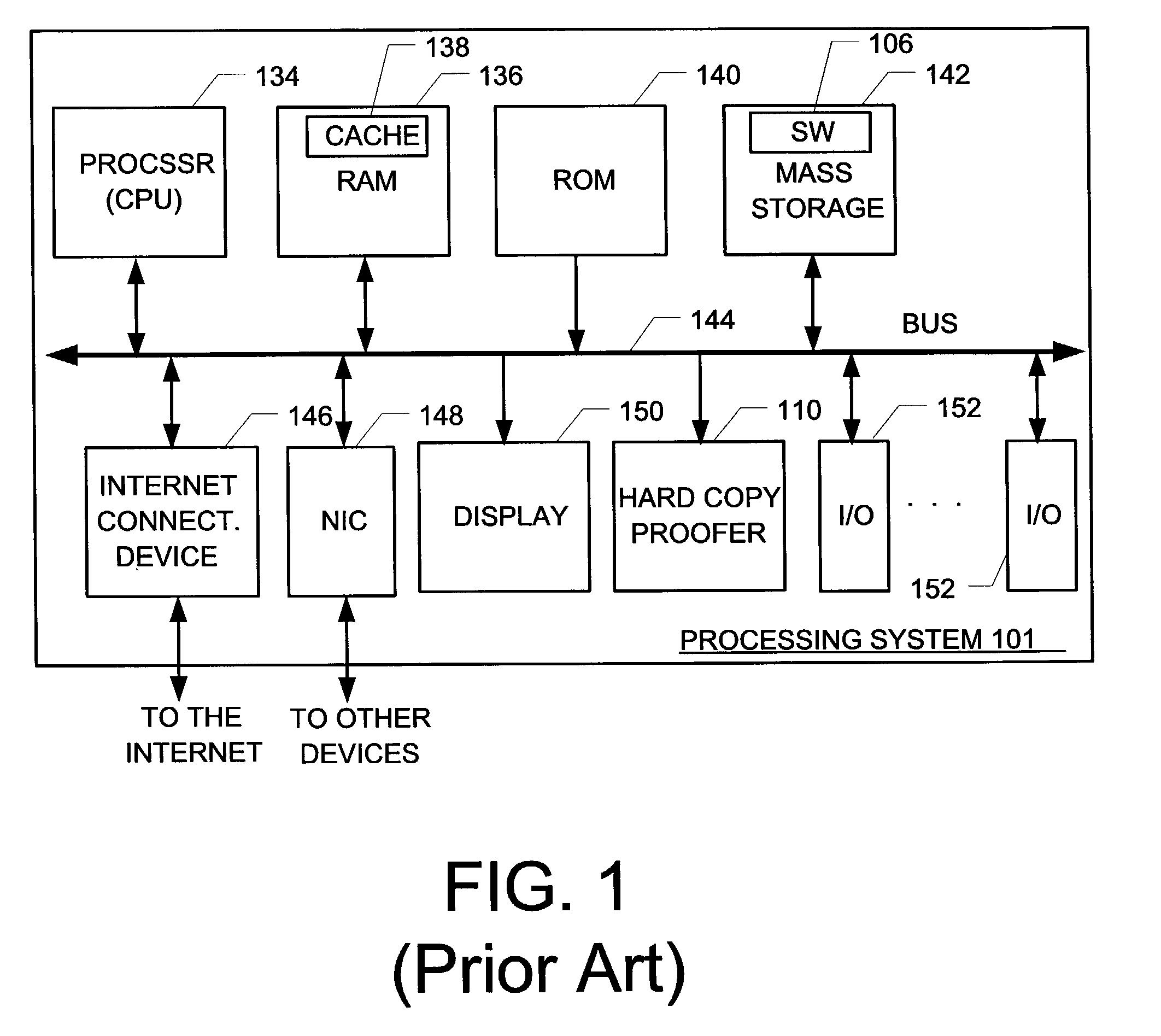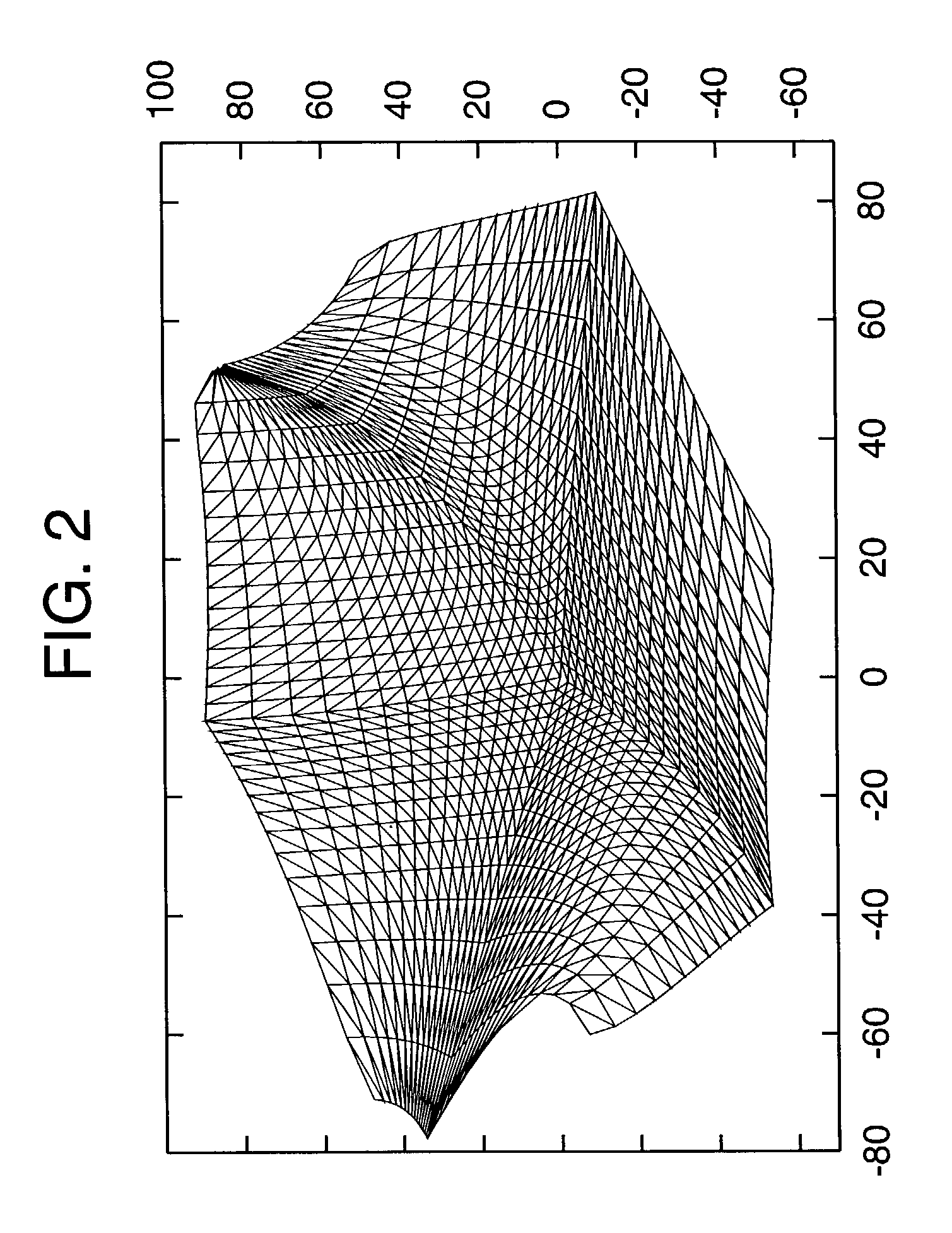Method and a device for determining multi-ink color separations
a multi-ink printing and color separation technology, applied in the field of color separation in a multi-ink printing system, can solve the problems of not considering all of these combinations as desirable, inability to “mix” inks with each other, and ambiguity
- Summary
- Abstract
- Description
- Claims
- Application Information
AI Technical Summary
Benefits of technology
Problems solved by technology
Method used
Image
Examples
Embodiment Construction
[0033]FIG. 1 is a simplified block diagram of a computer system 101 in which the present invention may be embodied. Versions of the present invention are embodied in a general-purpose computer system such as shown in FIG. 1, and the remaining description will generally assume that environment. However, the invention may be embodied in dedicated devices such as printer servers, and printer controllers. A computer system configuration such as that of FIG. 1 is standard, and as such, FIG. 1 is labeled “Prior Art.” A computer system such as system 101, suitably programmed to embody the present invention, however, is not prior art.
[0034]In accordance with known practice, the computer system includes one or more processors 134 that communicate(s) with a number of peripheral devices via a bus subsystem 144. These peripheral devices typically include a memory subsystem 136 shown comprising RAM and a cache 138, a user input facility (one of input devices 152), a display subsystem 150, output...
PUM
| Property | Measurement | Unit |
|---|---|---|
| dimension | aaaaa | aaaaa |
| color | aaaaa | aaaaa |
| volume | aaaaa | aaaaa |
Abstract
Description
Claims
Application Information
 Login to View More
Login to View More - R&D
- Intellectual Property
- Life Sciences
- Materials
- Tech Scout
- Unparalleled Data Quality
- Higher Quality Content
- 60% Fewer Hallucinations
Browse by: Latest US Patents, China's latest patents, Technical Efficacy Thesaurus, Application Domain, Technology Topic, Popular Technical Reports.
© 2025 PatSnap. All rights reserved.Legal|Privacy policy|Modern Slavery Act Transparency Statement|Sitemap|About US| Contact US: help@patsnap.com



